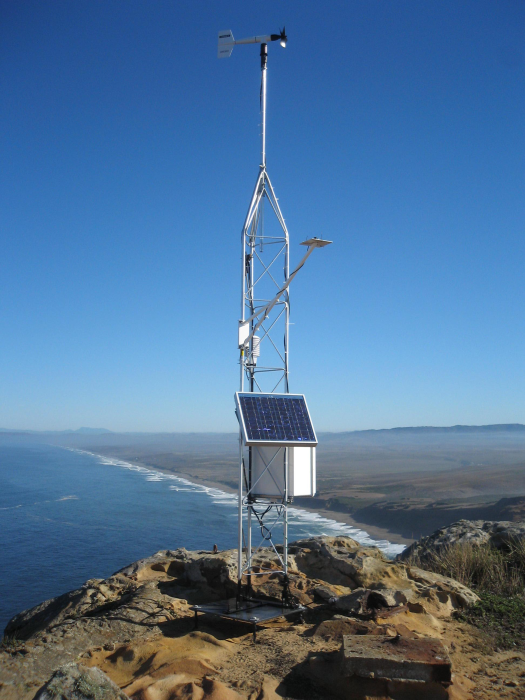





気候とその変動は、カリフォルニア州の 1 兆ドル規模の経済の 10 ~ 20 パーセントに影響を及ぼしていると推定されています。極西部では気候の変化が進行しているようですが、過去数年間、そのような変化を検知して報告するように特別に設計された監視システムは設置されていませんでした。
カリフォルニア州および米国海洋大気庁 (NOAA) の後援を受けたデザート研究所西部地域気候センターは、カリフォルニア州の気候監視方法のギャップを特定し、同州の気候に関する知識を向上させ、この情報を一般、政策、および技術の用途に普及させるプロジェクトに着手しました。この取り組みは、既存のデータ ソース、ステーションの場所、および情報の品質と種類の評価から始まりました。この段階では、州および連邦政府機関、および気候研究コミュニティとの協議も行われました。重要なパートナーには、カリフォルニア州水資源局、スクリップス研究所のカリフォルニア気候変動センターなどがあります。気候の多様性に富む広大な州であるため、選択されたクラスターとトランセクトに焦点を当てるというアプローチが取られ、気候の空間勾配が強く、地理的設定が十分に観測されていない地域に特に重点が置かれました。当初は、山と海岸線が新しい気象ステーションの優先対象となりました。
中央海岸からノースフォーク アメリカン川、シエラ山脈の東まで伸びる横断線が特定されており、ここに掲載されているポイント レイズの場所もその 1 つです。数十年にわたって開発やサイト特性 (植生や土地利用など) の変化が予想されず、土地所有権が安定している場所が強く優先されました。もう 1 つの優先事項は、適切に開放された露出です。すべてのサイトでライブ通信が行われ、すべてのデータがインターネットに投稿され、自由に利用できます。
気象観測所はCampbell Scientific社の CR1000 をベースにしており、通常 10 メートルの高さの塔から、気温、降水量、風速と風向、相対湿度、日射量、積雪深、土壌温度などの測定が行われます。このプロジェクトには、カリフォルニア州で長期にわたる気候観測を促進することに関心を持つ多くのパートナーが参加しています。